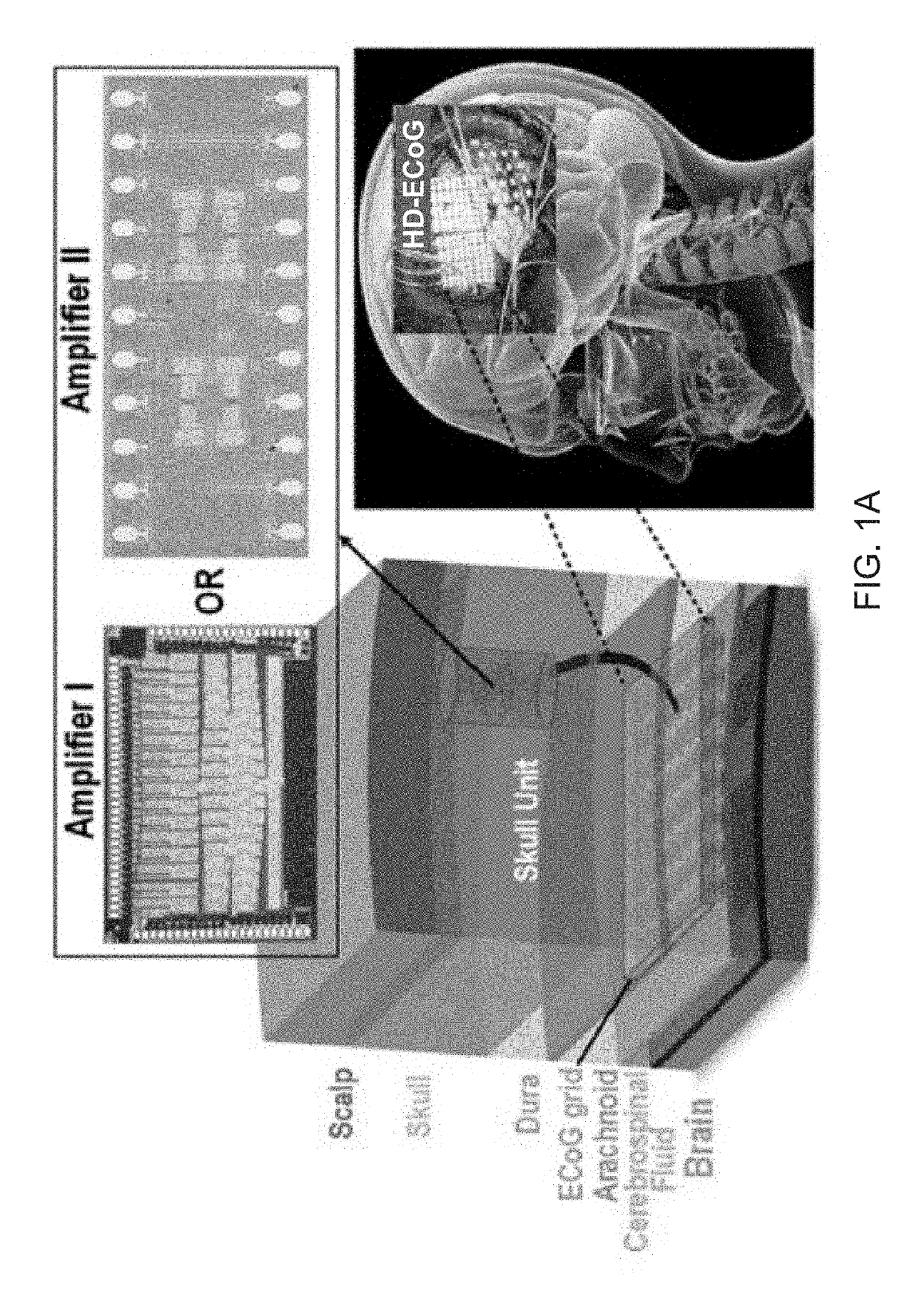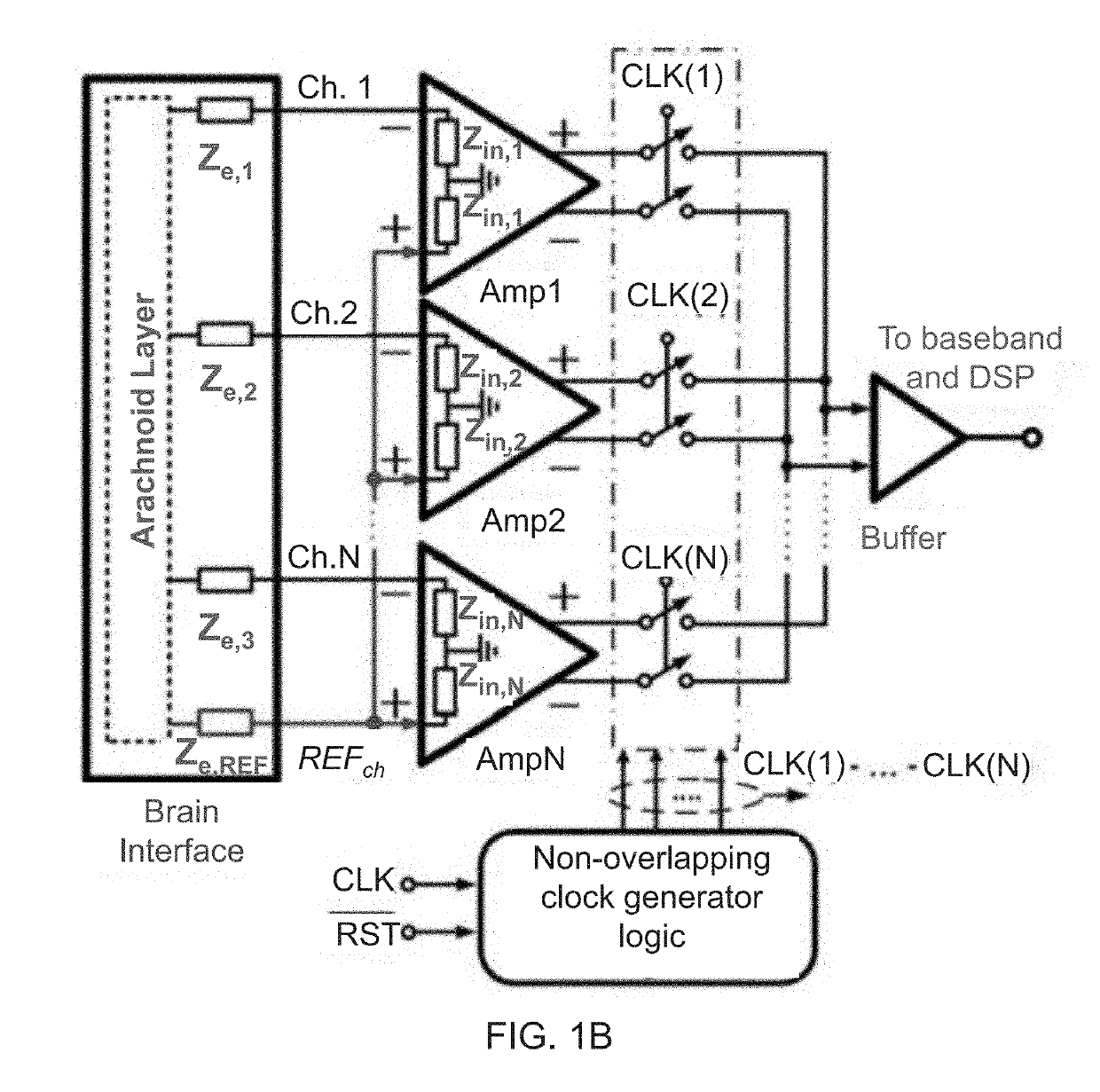Implantable electrocorticogram brain-computer interface system for restoring extremity movement
- Summary
- Abstract
- Description
- Claims
- Application Information
AI Technical Summary
Benefits of technology
Problems solved by technology
Method used
Image
Examples
Embodiment Construction
[0059]Referring now to FIGS. 1A-26, the present invention features a fully-implantable BCI system for acquiring and analyzing ECoG signals from a brain of a patient to enable direct brain control of a limb prosthetic (e.g., a robotic gait exoskeleton (“RGE”) or a functional electrical stimulation (“FES”) system). In an embodiment, the limb prosthetic is attached to an upper or lower extremity of the patient to enable movement of said extremity. In another embodiment, the RGE or FES is attached to an arm(s) or leg(s) of the patient.
[0060]As is well understood by one of ordinary skill in the art, an intracortically implanted microelectrode is subject to the formation of scar tissue (surrounding the intracortically implanted microelectrode) and an eventual dissolution of said microelectrode, which ultimately results in a degradation of the acquired ECoG signals. Therefore, in an exemplary embodiment of the present invention, the plurality of electrodes is implanted in a subdural space ...
PUM
 Login to View More
Login to View More Abstract
Description
Claims
Application Information
 Login to View More
Login to View More - R&D
- Intellectual Property
- Life Sciences
- Materials
- Tech Scout
- Unparalleled Data Quality
- Higher Quality Content
- 60% Fewer Hallucinations
Browse by: Latest US Patents, China's latest patents, Technical Efficacy Thesaurus, Application Domain, Technology Topic, Popular Technical Reports.
© 2025 PatSnap. All rights reserved.Legal|Privacy policy|Modern Slavery Act Transparency Statement|Sitemap|About US| Contact US: help@patsnap.com



